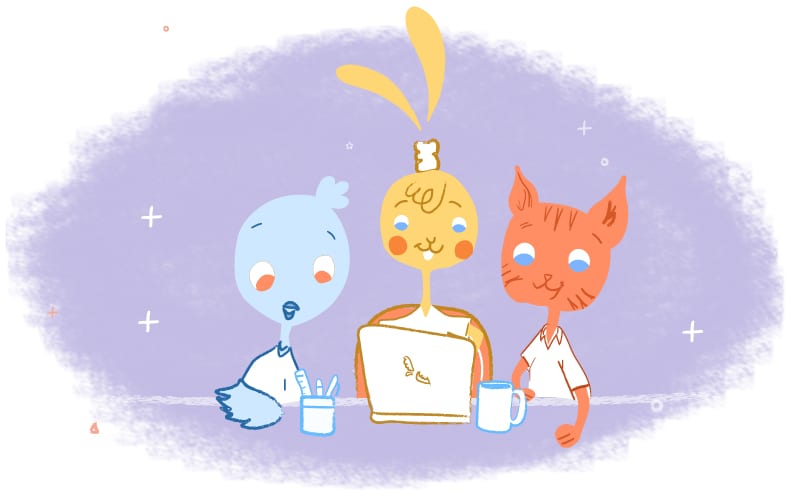

Consumers aren’t satisfied to simply buy products from companies anymore and just walk away. They crave deeper, more meaningful customer relationships with the brands they choose.
In other words, it’s time to start investing in your customer relationships.
Building relationships with buyers is a surefire way to future-proof your business. For one, you’ll make it easier to hold onto the people who bought from you once. As cited by MarketingCharts in 2023, a global Marigold study revealed that 79% of consumers favor brands that aim to build relationships with them. And favoritism can be shown in many ways, including repeat sales.
Another reason to push for stronger customer relationships is the ability to spend less and get more out of your marketing. When you don’t have to keep replacing customers, you have more money to put into your company. This is good for your organization’s overall health and longevity.
How can you start the customer relationship-building process? Emphasize collecting and using zero-party data.
Zero-Party Data: Adding Value to Every Marketing Decision
Zero-party data is in its moment right now, with talk of data depreciation and data privacy.
What makes zero-party different from — and in many ways superior to — first-party data, second-party data, and third-party cookies is the way it’s obtained. With zero-party data, you go right to the source (i.e., leads, customers) to gain insights.
For instance, you might send out surveys, prompt buyers to fill out quick forms, or conduct panel discussions. The results of those efforts are then added to your company’s zero-party data pool. As the months roll by and you keep pouring more exclusive zero-party data into that pool, the pool will grow deeper and broader. Best of all, it’s all data that’s pertinent to your organization and contains no extraneous fluff. That’s a huge asset.
Additional Benefits of Zero-Party Data
What else makes zero-party data so valuable for driving authentic relationships with shoppers? There’s complete transparency between you and them. Unlike third-party cookie collecting, which can feel creepy and intrusive to consumers, zero-party data collecting opens the door to two-way communication with buyers.
To better understand the distinctions between collecting zero-party data and collecting third-party data, picture this scenario: You’re following a customer who’s shopping at your store. You watch what the shopper does and take notes. Your hope? You’ll be able to make assumptions based on what you saw. Here’s the problem, though: Your customer doesn’t like being watched. It bothers them, which makes them do things they wouldn’t normally do, such as leave abruptly. Not a good way to get top-notch data.
A better approach might be to approach the customer at the checkout and ask them to complete a quick assessment. You could explain that you’ll be using data to improve the shopping experience at your store. Rather than having to guess at what the customer wants or thinks, you’d get from-the-source input. And you’d do it in a way that puts your customer at ease.
Does collecting zero-party data involve more work in many ways? Yes, but it has the power to supercharge your ability to forge lasting customer relationships and grow your customer base. As your base grows and you obtain more zero-party data, you can deliver higher-quality interactions with the people you serve.
It’s a solid mechanism to slow down buyer churn and set your company up for scaling success.
Using Zero-Party Data to Transform Your Customer Relationships
Like all tools, zero-party data is only as useful and productive as you make it. Consequently, you’ll want to be sure you’re developing strategic customer relationship marketing, sales, and support approaches that allow you to leverage the zero-party data you amass.
1. Inform your advertising with zero-party data.
With the phase-out of third-party cookies and general consumer concern over data privacy, it’s time to look elsewhere for information to drive your advertising decisions and content. Zero-party data is a natural choice. Just don’t take too long to start growing your zero-party data pool.
Why the rush? The longer you wait to find an alternative to third-party cookies, the harder it’ll be to know exactly what messaging to use when third-party cookies aren’t available. Therefore, start asking customers to provide their thoughts immediately through vehicles like quizzes. As digital marketing platform ViralGains points out, you’ll actually get more detailed, accurate data than you might otherwise garner from third-party cookies anyway.
You’ll also get a nice reward because your advertising will pack a more pertinent and powerful punch. Additionally, you’ll be able to develop content not just targeted toward wide demographic populations, but targeted toward actual people based on customer insights. When your advertising conveys precisely the right tone and message to show customers (and prospects) you actually “get” them at the individual level, you’re on the track to loyalty.
2. Lean into zero-party data to highlight you care about customer privacy.
Would you want to have a relationship with a brand that wasn’t trustworthy? No, and neither do your customers. To show that you can be trusted, be very transparent about your zero-party data collection mechanisms. For example, you might want to explain on your website how you use and safeguard buyers’ information.
According to ecommerce marketing platform provider Yotpo, 68% of people are okay with handing over their zero-party data to brands they like — but there’s a caveat. They want to know that they can trust those brands to use the data responsibly. By being very upfront about how you’re getting and using zero-party data, you can improve your trust factor with customers.
The more trust you can engender with shoppers, the more likely they’ll keep feeding you zero-party data. In the end, it’s a win-win solution that can cement a lasting relationship.
3. Seek out ways to personalize your customer engagements via your zero-party data.
Because zero-party data is coming from your customers, it doesn’t need to be interpreted the same way you might interpret third-party cookies. Consequently, it can be a terrific resource if you’re attempting to personalize your customer touchpoints. And you should. Personalization is a hot commodity.
Blame it all on personalization powerhouse players like Zappos, Amazon, and Apple. Their personalization efforts have gotten consumers accustomed to expecting tailored brand experiences. This isn’t likely to go away, either. Tech giant Adobe notes that 79% of buyers base their purchases on how well a company shows it cares about them. In other words, customers aren’t just looking at price or product. They’re trying to find brands that will be an intuitive “fit” and will look out for their interests.
By leveraging your zero-party data, you can correspond in a granular way with your consumers and maintain communicative customer relationships with them. Whether it’s through email, SMS, phone, or even “snail mail”, you’ll be able to sound less like a corporation and more like an old friend. In other words, you’ll hit all the emotional high notes, which is something that marketing insights leader eMarketer notes is important to 62% of consumers.
4. Work to achieve tighter brand-buyer values alignment via zero-party data.
Not long ago, a Harris Poll revealed that 82% of people desire a values alignment with the brands they choose and support. The sentiment is so strong and essential that three-quarters of shoppers will ditch a brand if they don’t feel aligned with its ethos.
Zero-party data can give you an immediate sense of whether or not your organization’s values and “making a difference” moments are meeting up with your customers’ values. If they’re not, you can pivot. If they are, you can emphasize your values in customer-facing content and interactions. At the same time, you can gauge if bigger industry trends are affecting your customers, such as brands’ stances on social issues. The Wall Street Journal has pointed out that many consumers are less interested in how companies feel about what’s happening in the socio-political realm. Nevertheless, zero-party data could help you figure out if you need to scale back or stay the course on your corporate advocacy.
You can’t just assume that because customers are purchasing from you that they feel like you’re working toward the same goals that matter to them. The only way to know is to ask them what matters most. From there, you can make tweaks to your value proposition or messaging as needed.
Zero-party data isn’t the only way to grow stronger bonds with customers. However, it’s a resource you can’t afford to ignore. Not only will it make it easier to develop customer relationships, but it will offer you an effective alternative to third-party cookies.
Featured Image Credit: Photo by Fauxels; Pexels; Thank you.











Deanna Ritchie
Editor-in-Chief at Calendar. Former Editor-in-Chief and writer at Startup Grind. Freelance editor at Entrepreneur.com. Deanna loves to help build startups, and guide them to discover the business value of their online content and social media marketing.